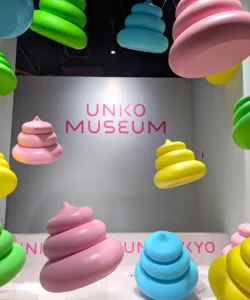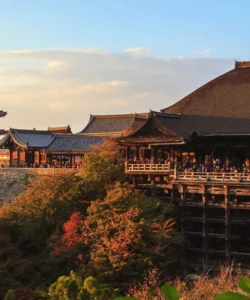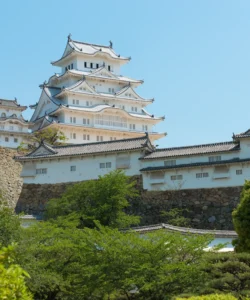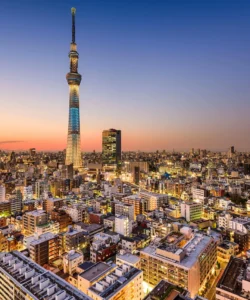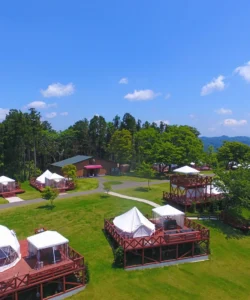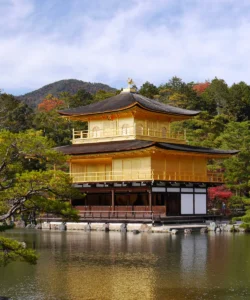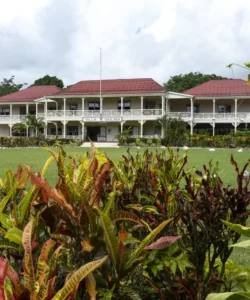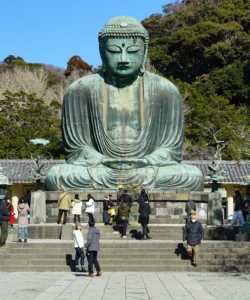Senso-ji (浅草寺), also known as Asakusa Kannon Temple, is Tokyo’s oldest and one of its most significant Buddhist temples. Located in the lively Asakusa district, it’s not just a place of worship but a vibrant cultural hub, drawing millions of visitors annually.
Address:
2-3-1 Asakusa, Taito-ku, Tokyo, Japan. It is easily accessible via public transportation, just a 5-minute walk from Asakusa Station (served by the Tokyo Metro Ginza Line, Toei Asakusa Line, and Tobu Skytree Line).
Outstanding Features:
- Kaminarimon (Thunder Gate): This iconic outer gate, with its massive red chōchin (lantern) and guardian statues of Fujin (wind god) and Raijin (thunder god), is one of Tokyo’s most recognizable landmarks. Its official name is Fūraijinmon (Gate of the Wind and Thunder Gods).
- Nakamise-dori: Leading from the Kaminarimon to the temple’s second main gate, Hozomon, is Nakamise-dori, a bustling 250-meter-long shopping street. It’s lined with approximately 90 traditional shops selling souvenirs, crafts, and a variety of Japanese snacks and sweets. This vibrant approach contributes significantly to the temple’s lively atmosphere.
- Hozomon (Treasure House Gate): This impressive two-story inner gate houses many of the temple’s treasures on its upper floor. It is guarded by two formidable Nio guardian statues and features a pair of enormous straw sandals (waraji), symbolizing the strength of the Nio guardians.
- Main Hall (Hondo): The grand main hall is dedicated to Kannon Bodhisattva (Guan Yin), the goddess of mercy. According to legend, a small golden statue of Kannon was caught in a fishing net by two brothers in 628 AD, leading to the temple’s founding in 645 AD, making it Tokyo’s oldest temple. The main hall, though rebuilt after being destroyed in World War II, maintains its traditional architectural splendor with intricate details, vibrant colors, and a dramatically sloping roof. The revered Kannon statue is hidden from public view.
- Five-Storied Pagoda (Gojūno-tō): Soaring 53 meters (175 feet) high, this pagoda is a prominent feature of the temple complex and the second tallest pagoda in Japan. It houses Buddhist relics and symbolizes elements of Buddhist cosmology.
- Incense Burner (Jokoro): In front of the Main Hall, visitors gather around a large copper incense burner, wafting the smoke over their bodies, believing it has healing properties and can cure ailments.
- Omikuji (Paper Fortunes): Visitors can obtain omikuji (paper fortunes) by shaking a numbered stick from a container and retrieving a corresponding fortune from a drawer. Good fortunes can be kept, while bad ones are traditionally tied to a nearby wooden rack, hoping to ward off misfortune.
- Festivals and Events: Senso-ji is the focal point of Tokyo’s largest and most popular festival, the Sanja Matsuri, held annually in late spring. Other events like the Kinryu-no-mai (Dragon Dance) and Hozuki Market (Chinese lantern plant fair) also attract large crowds, showcasing the temple’s role in local cultural life.
- Symbol of Rebirth: Having been destroyed during the Tokyo air raids in World War II and subsequently rebuilt, Senso-ji has become a powerful symbol of resilience, rebirth, and peace for the Japanese people.
Comparison with Similar Locations:
Senso-ji holds a unique position among Japan’s prominent Buddhist temples due to its historical depth, urban integration, and vibrant atmosphere:
- Tokyo’s Oldest Temple: While Kyoto boasts older and larger temple complexes (like Kiyomizu-dera or Todai-ji in Nara), Senso-ji is Tokyo’s most ancient, providing a tangible link to the city’s early history and making it a significant spiritual landmark in the bustling capital.
- Urban Integration and Commercial Approach: Unlike many temples that are secluded in natural settings (e.g., Mount Koya temples) or have a more formal, serene approach (e.g., Meiji Jingu Shrine in Tokyo, which is Shinto and known for its vast, tranquil forested grounds), Senso-ji is deeply integrated into the lively Asakusa district. The Nakamise-dori shopping street is an integral part of the experience, offering a unique blend of pilgrimage, shopping, and entertainment.
- Mass Appeal and Accessibility: Senso-ji is arguably the most visited religious site in the world, attracting over 30 million visitors annually. Its ease of access via multiple train lines and its open, welcoming atmosphere contribute to its immense popularity, often making it more crowded but also more vibrant than many other temples.
- Symbolic Rebirth: Its post-war reconstruction as a symbol of peace and resilience gives it a particular modern significance, contrasting with temples that have largely survived intact from ancient times.
- Specific Kannon Devotion: While many temples are dedicated to various Buddhist deities, Senso-ji’s long-standing and widespread devotion to Kannon Bodhisattva, stemming from its legendary founding, emphasizes a particular compassionate aspect of Buddhism.
Senso-ji is not just a historical monument; it’s a living, breathing part of Tokyo’s cultural fabric, offering a captivating glimpse into Japan’s rich spiritual traditions and its vibrant popular culture.


